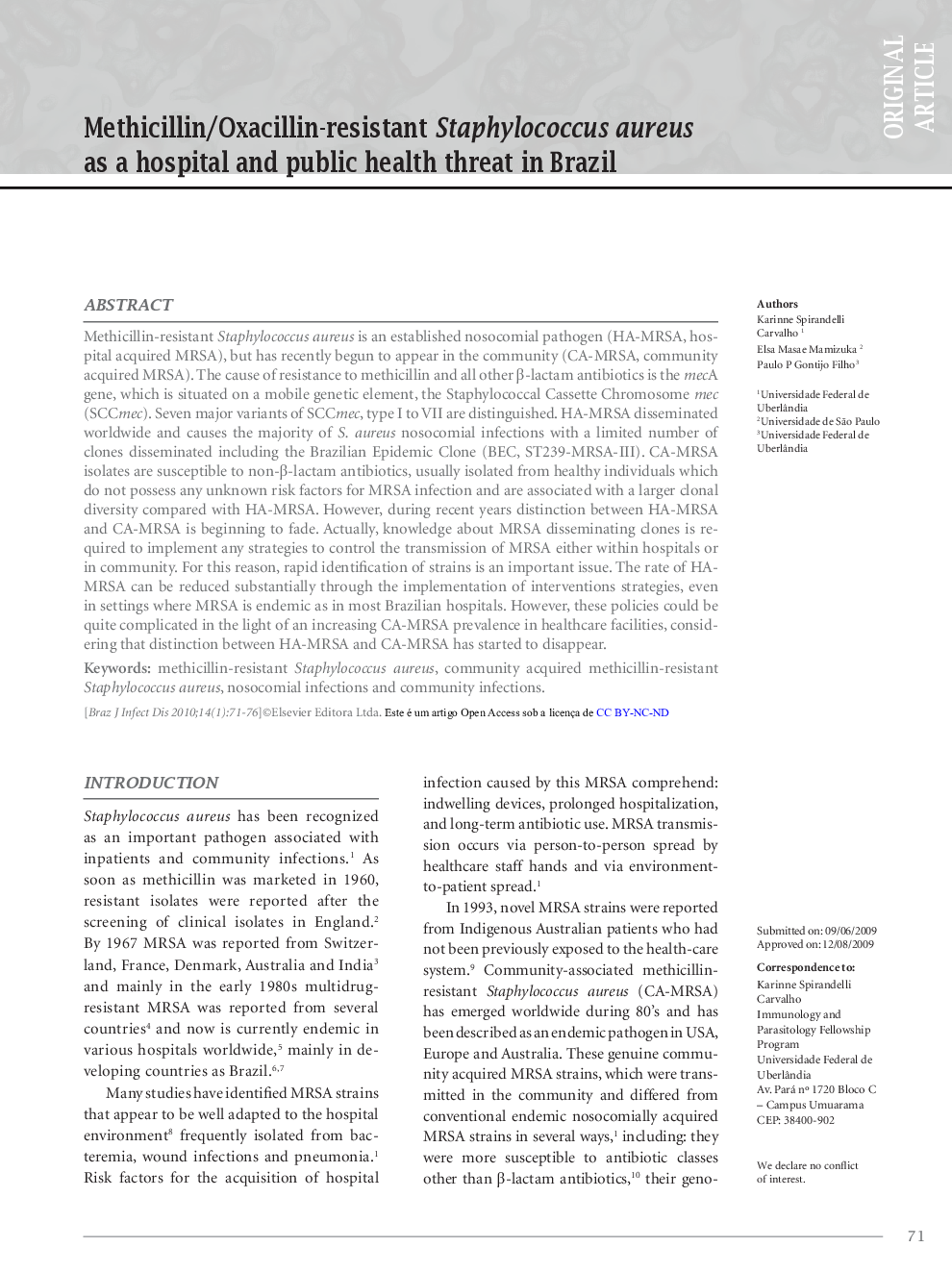| Article ID | Journal | Published Year | Pages | File Type |
|---|---|---|---|---|
| 3344570 | The Brazilian Journal of Infectious Diseases | 2010 | 6 Pages |
Methicillin-resistant Staphylococcus aureus is an established nosocomial pathogen (HA-MRSA, hospital acquired MRSA), but has recently begun to appear in the community (CA-MRSA, community acquired MRSA). The cause of resistance to methicillin and all other β-lactam antibiotics is the mecA gene, which is situated on a mobile genetic element, the Staphylococcal Cassette Chromosome mec (SCCmec). Seven major variants of SCCmec, type I to VII are distinguished. HA-MRSA disseminated worldwide and causes the majority of S. aureus nosocomial infections with a limited number of clones disseminated including the Brazilian Epidemic Clone (BEC, ST239-MRSA-III). CA-MRSA isolates are susceptible to non-β-lactam antibiotics, usually isolated from healthy individuals which do not possess any unknown risk factors for MRSA infection and are associated with a larger clonal diversity compared with HA-MRSA. However, during recent years distinction between HA-MRSA and CA-MRSA is beginning to fade. Actually, knowledge about MRSA disseminating clones is required to implement any strategies to control the transmission of MRSA either within hospitals or in community. For this reason, rapid identification of strains is an important issue. The rate of HAMRSA can be reduced substantially through the implementation of interventions strategies, even in settings where MRSA is endemic as in most Brazilian hospitals. However, these policies could be quite complicated in the light of an increasing CA-MRSA prevalence in healthcare facilities, considering that distinction between HA-MRSA and CA-MRSA has started to disappear.
